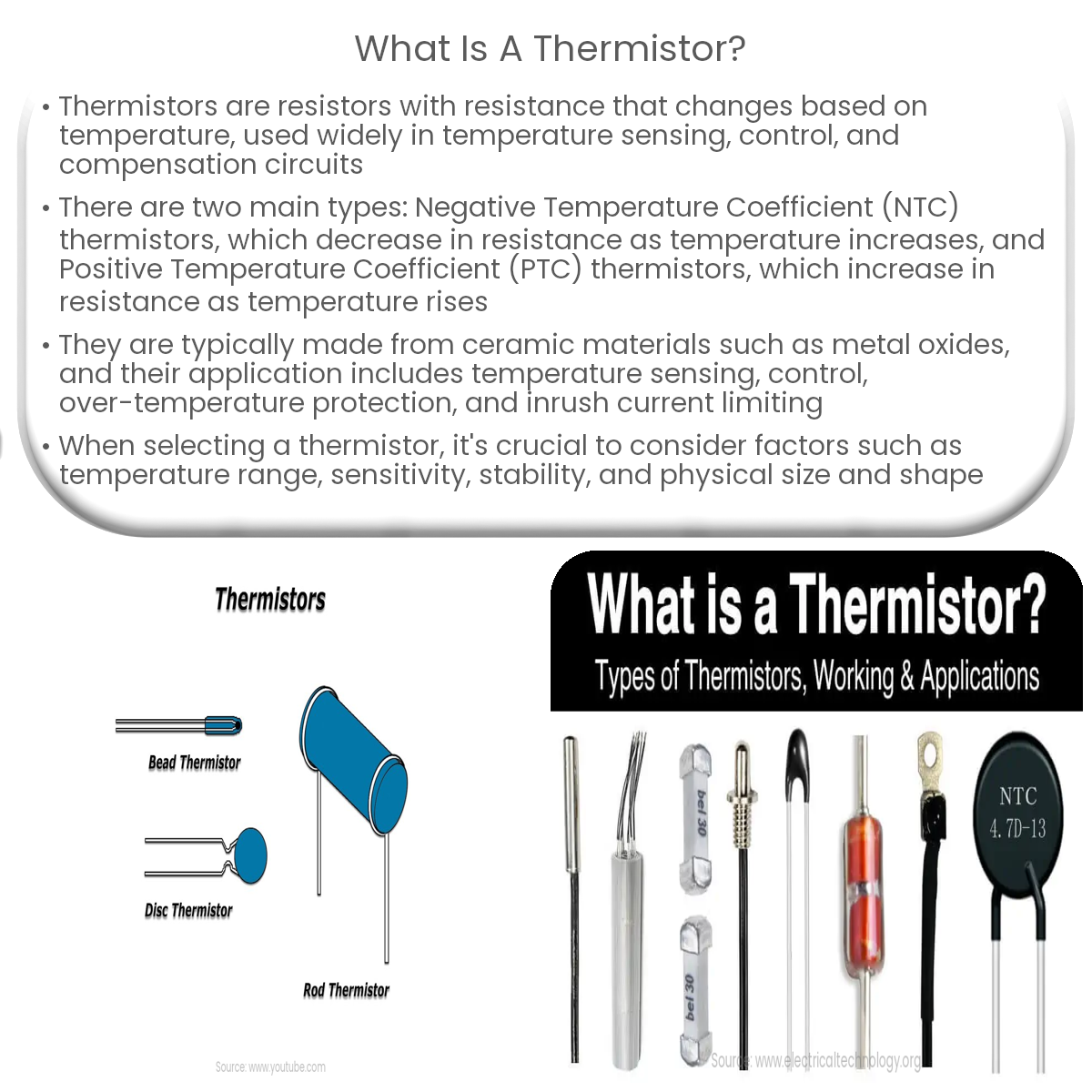A thermistor is a temperature-sensitive resistor, with resistance changing based on temperature, used for sensing, control, and protection.
Introduction to Thermistors
A thermistor is a type of resistor whose resistance changes with temperature. These temperature-sensitive components are widely used in various applications, such as temperature sensing, temperature control, and temperature compensation circuits.
Types of Thermistors
There are two primary types of thermistors:
- Negative Temperature Coefficient (NTC) thermistors: The resistance of NTC thermistors decreases as temperature increases. They are commonly used for temperature measurement and control due to their high sensitivity and accuracy.
- Positive Temperature Coefficient (PTC) thermistors: PTC thermistors exhibit an increase in resistance as temperature rises. They are often used for over-temperature protection and self-regulating heating applications.
Materials and Construction
Thermistors are typically made from ceramic materials such as metal oxides, including nickel, manganese, cobalt, or iron. The choice of material determines the thermistor’s temperature range, sensitivity, and stability. The ceramic material is usually pressed into a desired shape and then sintered at high temperatures to produce the final thermistor.
Applications of Thermistors
- Temperature Sensing: NTC thermistors are widely used in temperature sensors due to their high sensitivity, fast response time, and excellent long-term stability.
- Temperature Control: Thermistors can be used as temperature-sensitive elements in thermostats, HVAC systems, and other temperature control devices.
- Over-temperature Protection: PTC thermistors can be utilized to protect electronic components and circuits from overheating by limiting current flow when a certain temperature is exceeded.
- Inrush Current Limiting: PTC thermistors can also be employed as inrush current limiters in power supplies, protecting circuits from damaging current surges during power-up.
Selection Considerations
When choosing a thermistor for a specific application, several factors should be considered:
- Temperature Range: Ensure that the selected thermistor operates within the required temperature range of the application.
- Sensitivity: Choose a thermistor with suitable sensitivity to ensure accurate temperature measurement or control.
- Stability: Select a thermistor with good long-term stability for reliable performance over time.
- Physical Size and Shape: Consider the thermistor’s dimensions and mounting requirements based on the available space and installation method.


